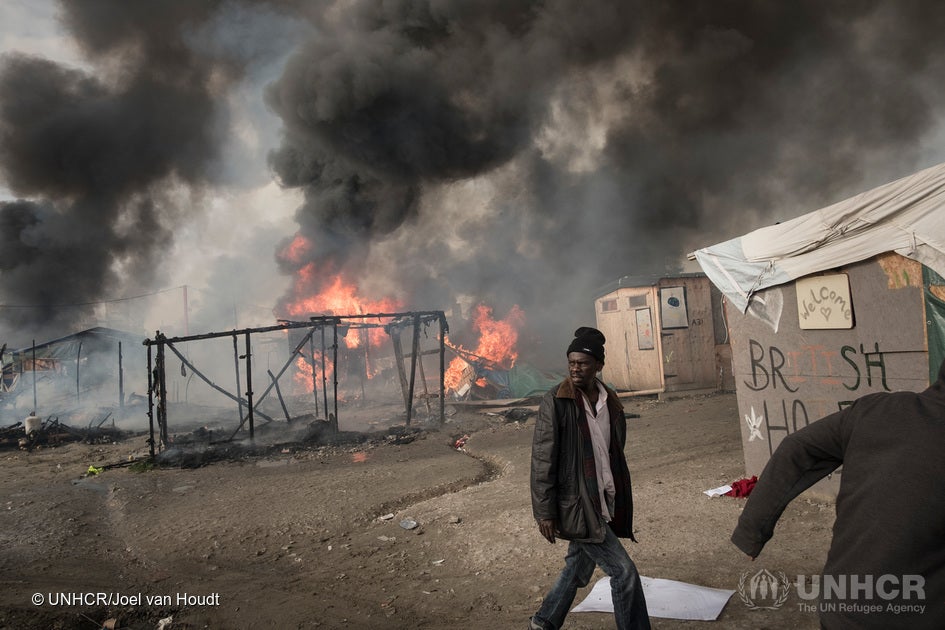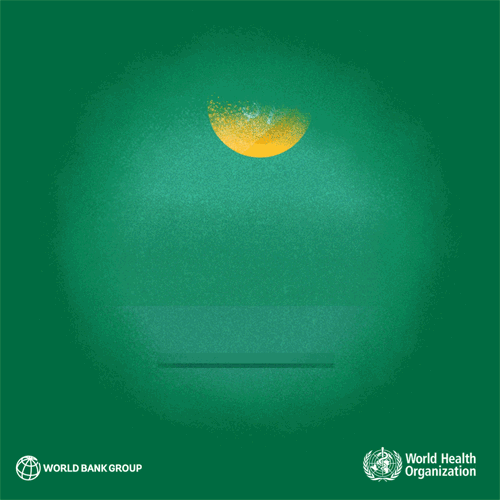
© UNHCR/Joel van Houdt
Armed conflict and violence disrupt social support structures and exposes civilian populations to high levels of stress. The 2015 Global Burden of Disease study found a positive association between conflict and depression and anxiety disorders. While most of those exposed to emergencies suffer some form of psychological distress, accumulated evidence shows that 15-20% of crisis-affected populations develop mild-to moderate mental disorders such as depression, anxiety, and post-traumatic stress disorders (PTSD). And, 3-4% develop severe mental disorders, such as psychosis or debilitating depression and anxiety, which affect their ability to function and survive. If not effectively addressed, the long-term mental health and psychosocial well-being of the exposed population may be affected.
In conflict or post-conflict situations like those currently faced in the Middle East, in some African countries, among refugees flowing into European Union countries, or the 7 million internally displaced population after 52 years of conflict in Colombia, one of the priorities is to develop programs to protect and improve people’s mental health and psychosocial well-being. In these situations, much-needed mental health care can be incorporated as part of humanitarian and development responses. Since affected populations are at an increased risk of mental disorders and psychological distress, inaction can severely overwhelm the local capacity to respond, particularly in settings where social networks and roles have been altered, and the health and social services infrastructure was already weak or rendered dysfunctional by crisis situations.
Is there a robust body of evidence to make the case for integrating mental health services in crisis response and addressing common skepticism at national and international levels? The simple answer is yes. Organizations such as the World Health Organization (WHO), the United Nations Refugee Agency (UNHCR), Partners in Health (PIH), International Medical Corps (IMC), Grand Challenges Canada, and the Mental Health Innovations Network have accumulated vast amounts of evidence about what to do in conflict and post-conflict settings. The 2016 Disease Control and Priorities report on Mental, Neurological, and Substance Use Disorders, which draws on the knowledge of institutions and experts from around the world, also provides a “gold standard” assessment and evidence on burden, interventions, policies and platforms, and economic evaluation.
The evidence is clear. Effective scaled-up responses to improve the mental health and psychosocial wellbeing of conflict-affected populations require careful adaptation to specific contexts of multi-layered systems of services and supports (e.g., provision of basic needs and essential services such as food, shelter, water, sanitation, and basic health care; action to strengthen community and family supports; emotional and practical support through individual, family or group interventions; and community-based primary care health systems). This allows a focus on affected individuals as a whole, addressing both their physical and mental health needs, while reducing the risk of stigma and discrimination among families and communities. This is important since mental disorders are highly co-morbid with other priority conditions (e.g., maternal and child health conditions, HIV/AIDS, and non-communicable diseases such as cancer and diabetes).
To inform the design of context-specific interventions in emergency settings, the mapping of the problem is of paramount importance, including assessment of mental health and psychosocial information about the affected population, covering both those with disorders induced by the crisis, and those with preexisting disorders. Such assessments can also clarify what is the current availability of mental health services in affected settings.
As illustrated by PIH experience in countries such as Haiti, Rwanda, Peru, and Liberia, many effective, evidence-based interventions are available and can be grouped into an essential package of interventions along a mental health value chain at community and facility levels, that includes prevention (e.g., community stigma reduction); case finding (e.g., psychological assessment, diagnosis); treatment (e.g., counselling, psychosocial interventions such as cognitive behavioral therapy, and treatment with essential medicines such as antidepressant and antipsychotic medications); follow-up (e.g., monitoring of symptoms); and reintegration (e.g., social and economic interventions). 
Are these interventions cost-effective? A WHO-led study prepared for the WBG/WHO global mental health event at the 2016 WBG/IMF Spring Meetings showed that the estimated cost of treatment interventions at the community level for moderate to severe cases of depression, including basic psychosocial treatment for mild cases and either basic or more intensive psychosocial treatment plus antidepressant drug for moderate to severe cases, is quite low: the average annual cost during 15 years of scaled-up investment is $.08 per person in low-income countries, $0.34 in lower middle-income countries, $1.12 in upper middle-income countries, and $3.89 in high-income countries. Per person costs for treatment of anxiety disorders are nearly half that of depression. In terms of the economic returns on investment, benefit-to-cost ratios for scaled-up depression treatment across country income groupings were in the range of 2.3 to 2.6. For anxiety disorders, the ratios were slightly higher, with a range 2.7–3.0.
We have to be clear that the provision of mental health and psychosocial support services at the community level cannot be seen only as a vertical or free-standing intervention offered in a health facility. Rather, it needs to be part of broad integrated platforms—population, community and health care—that provide basic services and security, promote community and family support through participatory approaches, and strengthen coping mechanisms not only to improve people’s daily functioning and wellbeing, and protect the most vulnerable (e.g., women and children, adolescents, elderly, and those with severe mental illness) from further adversity, but also to empower the affected people to take charge of their lives as valuable members of society.
If this is done, as Toluwalola Kasali observed, we will be helping the affected people regain “the ability to dream, desire and work for a future, one very different from their present circumstances.”
Related
Inter-Agency Standing Committee (IASC) (2007). IASC Guidelines on Mental Health and Psychosocial Support in Emergency Settings. Geneva: IASC
WHO. Building back better: sustainable mental health care after emergencies. WHO: Geneva, 2013
WHO & UNHCR. Assessing Mental Health and Psychosocial Needs and Resources: Toolkit for Humanitarian Settings. Geneva: WHO, 2012
WHO & UNHCR. mhGAP Humanitarian Intervention Guide (mhGAP-HIG): Clinical management of mental, neurological and substance use conditions in humanitarian emergencies. Geneva: WHO, 2015
WHO, UNICEF, UNFPA, UNHCR, & UN Action. MHPSS for conflict-related sexual violence: 10 myths. WHO: Geneva
Scaling-up treatment of depression and anxiety: a global return on investment analysis. The Lancet Psychiatry, Volume 3, No. 5, p415–424, May 2016
Culture, Context and the Mental Health and Psychosocial Wellbeing of Syrians
Partners in Health mental health site
WBG Mental Health website
Mental Health Innovations Network site
Grand Challenges Canada site
Disease Control Priorities. Vol. 3. Mental, Neurological, and Substance Use Disorders
Internally Displaced Persons (IDPs): An Integrated Approach to Rehabilitating IDPs with Dignity. Paper by: Toluwalola Kasali, 12 February, 2016


Join the Conversation